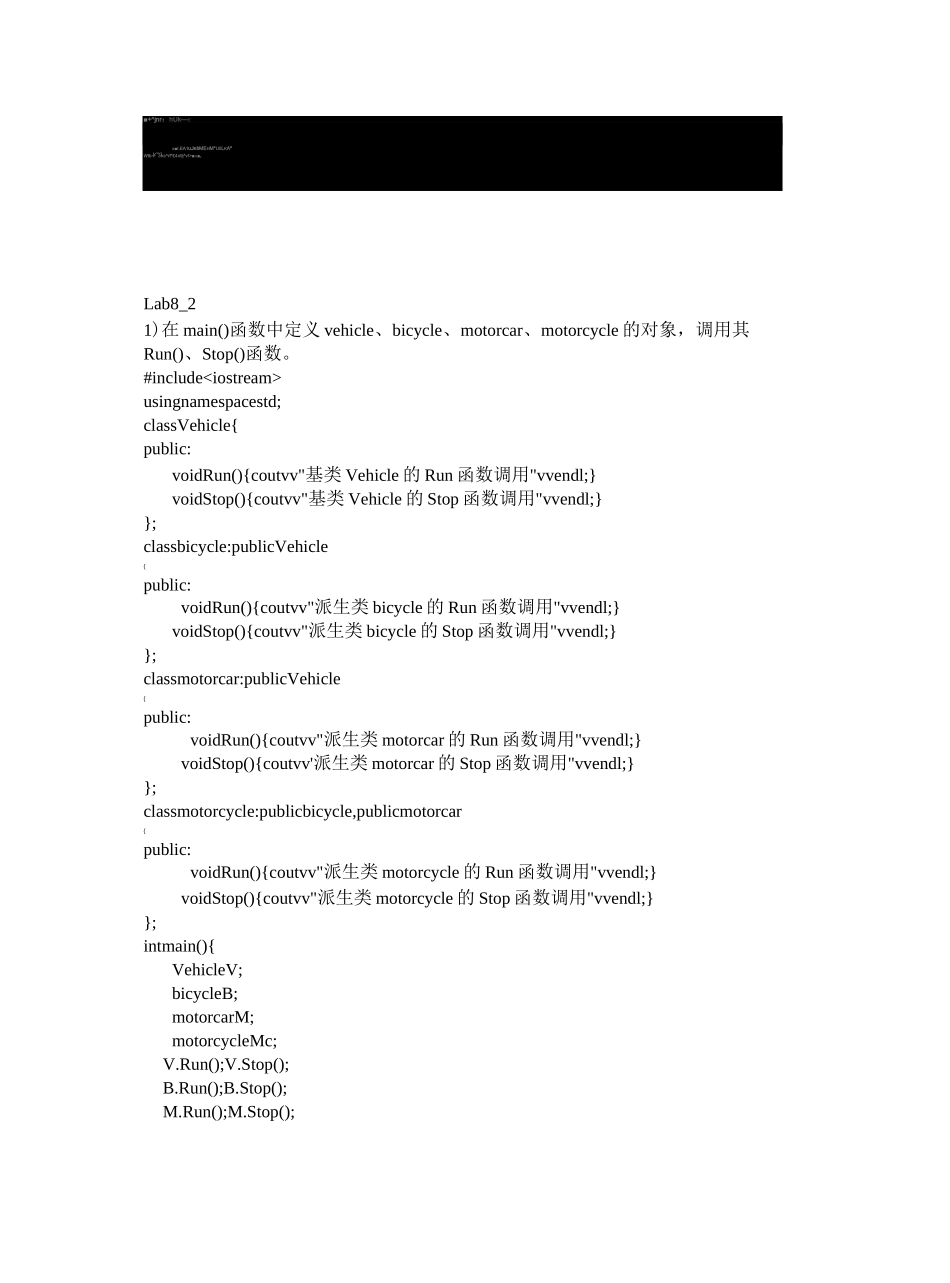实验六1.实验要求(1) 定义 Point 类,有坐标_x,_两个成员变量;对 Point 类重载“++”(自增)、“一一”(自减)运算符,实现对坐标值的改变。(2) 定义一个车(vehiele)基类,有 Run、Stop 等成员函数,由此派生出自行车(bicycle)类、汽车(motorcar)类,从 bicycle 和 motorcar 派生出摩托车(motorcycle)类,它们都有 Run、Stop 等成员函数。观察虚函数的作用。2. 实验内容及实验步骤(1) 编写程序定义 Point 类,在类中定义整型的私有成员变量_x_y,定义成员函数 Point&operator++();Pointoperator++(int);以实现对 Point 类重载“++”(自增)运算符,定义成员函数 Point&operator();Pointoperator(int);以实现对 Point 类重载""(自减)运算符,实现对坐标值的改变。程序名:lab8_l.cpp。(2) 编写程序定义一个车(vehicle)基类,有 Run、Stop 等成员函数,由此派生出自行车 (bicycle)类、汽车 (motorcar)类,从 bicycle 和 motorcar 派生出摩托车(motorcycle)类,它们都有 Run、Stop 等成员函数。在 main()函数中定义 vehicle>bicycle、motorcar、motorcycle 的对象,调用其 Run()、Stop()函数,观察其执行情况。再分别用 vehicle 类型的指针来调用这几个对象的成员函数,看看能否成功;把 Run、Stop 定义为虚函数,再试试看。程序名:lab8_2.cpp。3. 源程序Lab8_1#includeusingnamespacestd;classPoint{public:Point(intX,intY):_x(X),_y(Y){}Pointoperator++();Pointoperator++(int);Pointoperator--();Pointoperator--(int);voidPutout()const;private:int_x,_y;};cout<<"("<<_x<<", "<<_y<<")"<■■■vLab8_21)在 main()函数中定义 vehicle、bicycle、motorcar、motorcycle 的对象,调用其Run()、Stop()函数。#includeusingnamespacestd;classVehicle{public:voidRun(){coutvv"基...


